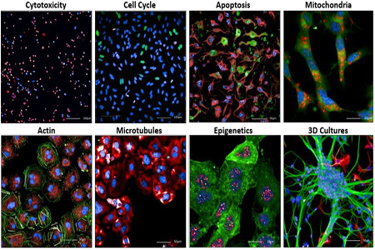One-Step SAR: Using High-Content Imaging To Drive Small Molecule Protein Degraders From Hit To Lead
By Clark Driscoll, Erin Olin, Adam McCabe, Nicholas Lenhard, Jennie Sims, Ph.D., and Gregory Williams, Ph.D.

High-content imaging (HCI) has transformed drug discovery by enabling rapid identification and characterization of potential drug candidates. Integrating automated microscopy, image analysis, and multiplexing, HCI allows for the simultaneous quantification of multiple cellular features within a single experiment. This approach provides critical insights into cellular morphology, protein localization, and functional responses, aiding in the understanding of disease mechanisms and drug efficacy. By accelerating large-scale compound screening and uncovering mechanisms of action, HCI streamlines the drug discovery process from target identification to lead optimization.
Curia has developed a cost-effective high-content immunofluorescence workflow using an immortalized patient cell line to identify small molecule protein degraders. Leveraging the Revvity Opera Phenix™ confocal imaging system, this workflow maximizes data content through careful assay design, delivering a comprehensive analysis of compound effects, including on-target and off-pathway phenotypes, as well as cytotoxicity — all within a single assay.
Get unlimited access to:
Enter your credentials below to log in. Not yet a member of Outsourced Pharma? Subscribe today.
